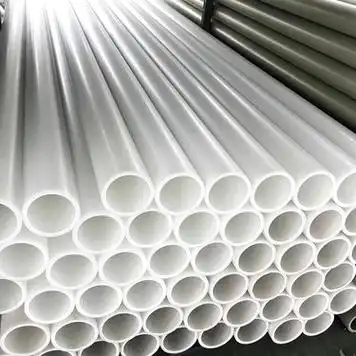The PP pipes (polypropylene pipes) produced by Qingdao Longchang Jie have a wide range of connection options. We can choose flexibly according to actual needs. Specifically:
1.Hot melt connection
·This method achieves the fusion of pipes and fittings by heating, resulting in excellent connection integrity.
- Hot-melt socket connection: During the operation, first heat the socket of the pipe and the socket of the pipe fitting to a molten state. Then quickly align and insert them into place. After cooling, a firm connection will be formed. It is particularly suitable for small-diameter PP-R pipes, such as water supply pipes in home renovations. It not only provides a secure connection but also has excellent sealing performance, and is less likely to cause water leakage problems.
- Hot-melt butt welding: This method is mainly used for large-diameter PP pipes. During the connection process, both ends of the two pipes need to be heated to a molten state. Then, directly press the two ends together and let them naturally fuse. During this process, the temperature, the duration of heating, and the pressure applied during the alignment all need to be precisely controlled. Otherwise, it may affect the strength and sealing performance of the interface.
2.Mechanical connection
·It achieves fixation and sealing through mechanical structures, and is relatively easy to install.
- Socket type: There are two common types. One is with a sealing ring. After inserting the pipe into the pipe fitting, the sealing ring will tightly adhere to the pipe wall to achieve a sealing effect; the other is the threaded cap type. By tightening the cap, the sealing performance can be enhanced. This connection method has simple installation steps and is very suitable for use in drainage systems.
- Clamp type: Use stainless steel clamps to tightly secure the pipe and the pipe fitting. The tightening force of the clamp can make the rubber gasket at the interface closely adhere, thus achieving sealing. It has good seismic performance and can be used stably in some environments with vibrations. Moreover, if maintenance or replacement of the pipe is needed, it is easy to disassemble and the maintenance cost is relatively low.
3.Flange connection
·Flanges need to be installed at both ends of the pipeline, and then the two flanges should be firmly fixed together using bolts. This connection method can withstand high pressure, so it is suitable for large-diameter pipelines or high-pressure systems. During installation, it is necessary to ensure that the two flanges remain parallel, and the bolts should be evenly tightened in a certain sequence to guarantee the sealing and stability of the interface.
4.Electrical fusion connection
·Resistors are pre-installed on the inner walls of the pipe fittings. When connecting, insert the pipe into the fitting, then apply electricity to the resistors. As the resistors heat up, the contact area between the pipe and the fitting will melt. After cooling, the two will fuse together. This method is highly automated and requires less manual skill. It can be successfully completed even in places with limited space and complex environments. This method is also suitable for large-diameter pipes.
5.Other connection methods
- Thread Transition: When a PP pipe needs to be connected to a metal pipe, this method can be used. Before the connection, a sealing tape should be wrapped around the threads to prevent water leakage at the interface.
- Adhesive Repair: Use a special adhesive to bond the pipe interface. This is usually used for temporary pipe repairs or in scenarios with relatively low pressure. Because the temperature resistance and strength of this connection method are relatively low, it cannot be used in long-term high-pressure systems.


